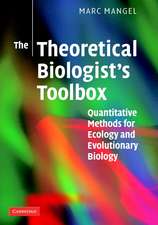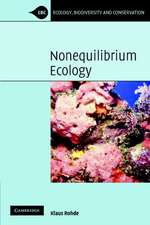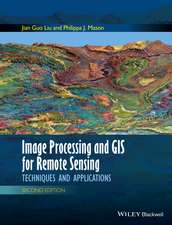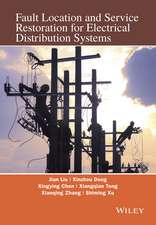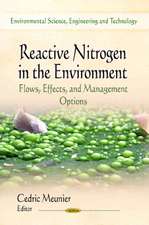Sources, Sinks and Sustainability: Cambridge Studies in Landscape Ecology
Editat de Jian-Guo Liu, Vanessa Hull, Anita T. Morzillo, John A. Wiensen Limba Engleză Paperback – 29 iun 2011
| Toate formatele și edițiile | Preț | Express |
|---|---|---|
| Paperback (1) | 462.65 lei 22-36 zile | |
| Cambridge University Press – 29 iun 2011 | 462.65 lei 22-36 zile | |
| Hardback (1) | 905.16 lei 43-57 zile | |
| Cambridge University Press – 29 iun 2011 | 905.16 lei 43-57 zile |
Preț: 462.65 lei
Preț vechi: 519.83 lei
-11% Nou
Puncte Express: 694
Preț estimativ în valută:
88.54€ • 91.91$ • 73.83£
88.54€ • 91.91$ • 73.83£
Carte disponibilă
Livrare economică 03-17 martie
Preluare comenzi: 021 569.72.76
Specificații
ISBN-13: 9780521145961
ISBN-10: 0521145961
Pagini: 544
Ilustrații: 87 b/w illus.
Dimensiuni: 174 x 247 x 24 mm
Greutate: 1.04 kg
Editura: Cambridge University Press
Colecția Cambridge University Press
Seria Cambridge Studies in Landscape Ecology
Locul publicării:Cambridge, United Kingdom
ISBN-10: 0521145961
Pagini: 544
Ilustrații: 87 b/w illus.
Dimensiuni: 174 x 247 x 24 mm
Greutate: 1.04 kg
Editura: Cambridge University Press
Colecția Cambridge University Press
Seria Cambridge Studies in Landscape Ecology
Locul publicării:Cambridge, United Kingdom
Cuprins
Preface; Acknowledgements; List of contributors; Part I. Introduction: 1. Impact of a classic paper by H. Ronald Pulliam: the first 20 years Vanessa Hull, Anita T. Morzillo and Jianguo Liu; Part II. Advances in Source-Sink Theory: 2. Evolution in source-sink environments: implications for niche conservatism Robert D. Holt; 3. Source-sink dynamics emerging from unstable ideal-free habitat selection Douglas W. Morris; 4. Sources and sinks in the evolution and persistence of mutualisms Craig W. Benkman and Adam M. Siepielski; 5. Effects of climate change on dynamics and stability of multiregional populations Mark C. Andersen; 6. Habitat quality, niche breadth, temporal stochasticity, and the persistence of populations in heterogeneous landscapes Scott M. Pearson and Jennifer M. Fraterrigo; 7. When sinks rescue sources in dynamic environments Matthew R. Falcy and Brent J. Danielson; 8. Sinks, sustainability, and conservation incentives Alessandro Gimona, Gary Polhill and Ben Davies; Part III. Progress in Source-Sink Methodology: 9. On estimating demographic and dispersal parameters for niche and source-sink models H. Ronald Pulliam, John M. Drake and Juliet R. C. Pulliam; 10. Source-sink status of small and large wetland fragments and growth rate of a population network Gilberto Pasinelli, Jonathan P. Runge and Karin Schiegg; 11. Demographic and dispersal data from anthropogenic grasslands: what should we measure? John B. Dunning, Jr, Daniel M. Scheiman and Alexandra Houston; 12. Network analysis: a tool for studying the connectivity of source-sink systems Ferenc Jordán; 13. Sources, sinks, and model accuracy Matthew A. Etterson, Brian J. Olsen, Russell Greenberg and W. Gregory Shriver; 14. Scale-dependence of habitat sources and sinks Jeffrey M. Diez and Itamar Giladi; 15. Effects of experimental population removal for the spatial population ecology of the alpine butterfly, Parnassius smintheus Stephen F. Matter and Jens Roland; Part IV. Improvement of Source-Sink Management: 16. Contribution of source-sink theory to protected area science Andrew Hansen; 17. Evidence of source-sink dynamics in marine and estuarine species Romuald N. Lipcius and Gina M. Ralph; 18. Population networks with sources and sinks along productivity gradients in the Fiordland Marine Area, New Zealand: a case study on the sea urchin Evechinus chloroticus Stephen R. Wing; 19. Source-sinks, metapopulations, and forest reserves: conserving northern flying squirrels in the temperate rainforests of Southeast Alaska Winston P. Smith, David K. Person and Sanjay Pyare; 20. Does habitat fragmentation generate breeding sources, sinks, and ecological traps in migratory songbirds? Scott K. Robinson and Jeffrey P. Hoover; 21. Source-sink population dynamics and sustainable leaf harvest of the understory palm Chamaedorea radicalis Eric J. Berry, David L. Gorchov and Bryan A. Endress; 22. Assessing positive and negative ecological effects of corridors Nick Haddad, Brian Hudgens, Ellen I. Damschen, Douglas J. Levey, John L. Orrock, Joshua J. Tewksbury and Aimee J. Weldon; Part V. Synthesis: 23. Sources and sinks: what is the reality? John Wiens and Beatrice Van Horne; Index.
Descriere
Presents the latest advances in source-sink theory, methods and applications for sustaining natural resources and biodiversity.









